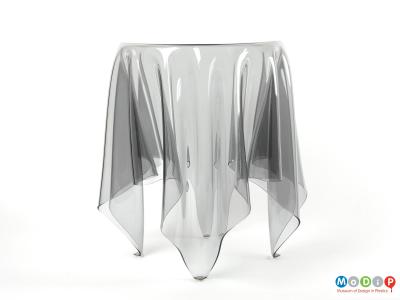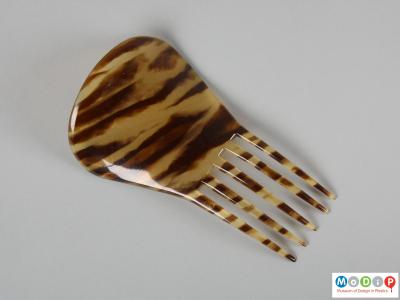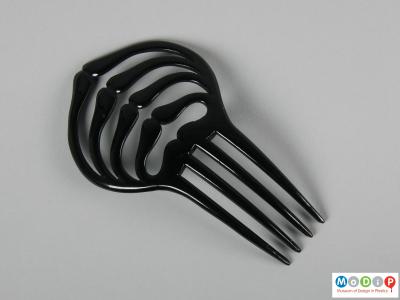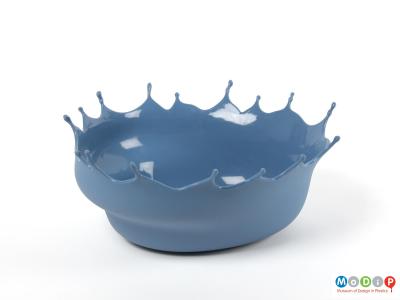The art of creating an illusion is the ability to deceive the viewer into thinking that they see something other than what is real.
John Brauer, the designer of the table (1), wanted to recreate a scene of a Copenhagen café with tables covered with white table cloths. “Each cloth was square and almost touched the floor. I stopped and took a photo through the window ... I went to a plastic workshop, showed them the image and asked if it was possible to make such an object in plastic.” The solution was to heat a square sheet of acrylic and drape it over a circular former.
Objects made of plastics are sometimes designed to fool people into thinking that they are more expensive than they really are. These combs (2 - 5), if made from the relevant natural material would have high production costs because the material needs to be sourced, then cleaned, individually carved into shape (possibly by hand), and polished to create a smooth surface, all of which takes time and expertise. These plastic alternatives have been injection moulded in seconds at the same time as tens, if not hundreds, of identical pieces. In comparison, these beakers (6) provide an example of objects being made of one plastic material and imitating another. These reusable polycarbonate beakers are ironically designed to look like cheaper disposable polystyrene cups.
The Dropp! fruit bowl (7) is made from silicone, a flexible and relatively soft material, but not as soft as the liquid splash it is supposed to represent. The density and nature of the colour provided by the material creates a convincing illusion of a splash of paint which no other material could produce.







